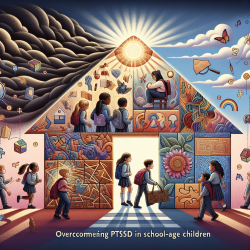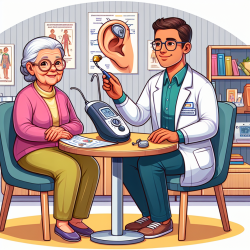Understanding PTSD in School-Age Children
Post-Traumatic Stress Disorder (PTSD) is a mental health condition that can affect individuals of all ages, including children. Traditionally, the criteria for diagnosing PTSD have been developed with adults in mind, but recent research suggests that these criteria may not be entirely appropriate for school-age children. A study titled Optimizing clinical thresholds for PTSD: Extending the DSM-5 preschool criteria to school-age children explores the potential benefits of using preschool criteria for diagnosing PTSD in children aged 7-11.
The Research Findings
The study involved 327 children who were exposed to Hurricane Ike, a traumatic event that provided a unique opportunity to assess PTSD symptoms. The researchers compared the DSM-5 adult criteria with the preschool criteria, which are currently used for children aged six and younger. The findings were revealing:
- Using preschool criteria, twice as many children were identified with PTSD compared to using adult criteria.
- Children diagnosed with the preschool criteria reported significant functional impairment, similar to those diagnosed with adult criteria.
- The preschool criteria were associated with more PTSD risk factors than the adult criteria.
Why Preschool Criteria?
The preschool criteria may be more suitable for school-age children because they consider developmental differences. Children in this age group may not have the cognitive and verbal skills to express complex emotions and thoughts required by adult criteria. The preschool criteria focus on observable behaviors and symptoms, making it easier to identify PTSD in younger children.
Implications for Practitioners
For mental health practitioners, these findings suggest that using the preschool criteria for PTSD diagnosis in school-age children could lead to more accurate identification and treatment. This approach may help ensure that children who need support are not overlooked due to the limitations of adult-oriented criteria.
Encouraging Further Research
While the study provides compelling evidence for the use of preschool criteria, further research is needed to refine and optimize PTSD diagnostic criteria for school-age children. Practitioners are encouraged to stay informed about ongoing research and consider how these findings can be integrated into their practice.
Conclusion
The study highlights the importance of considering developmental stages when diagnosing PTSD in children. By adopting more appropriate criteria, mental health professionals can better support the mental health needs of school-age children. As research continues, practitioners should remain open to evolving diagnostic approaches that prioritize the unique needs of children.
To read the original research paper, please follow this link: Optimizing clinical thresholds for PTSD: Extending the DSM-5 preschool criteria to school-age children.










